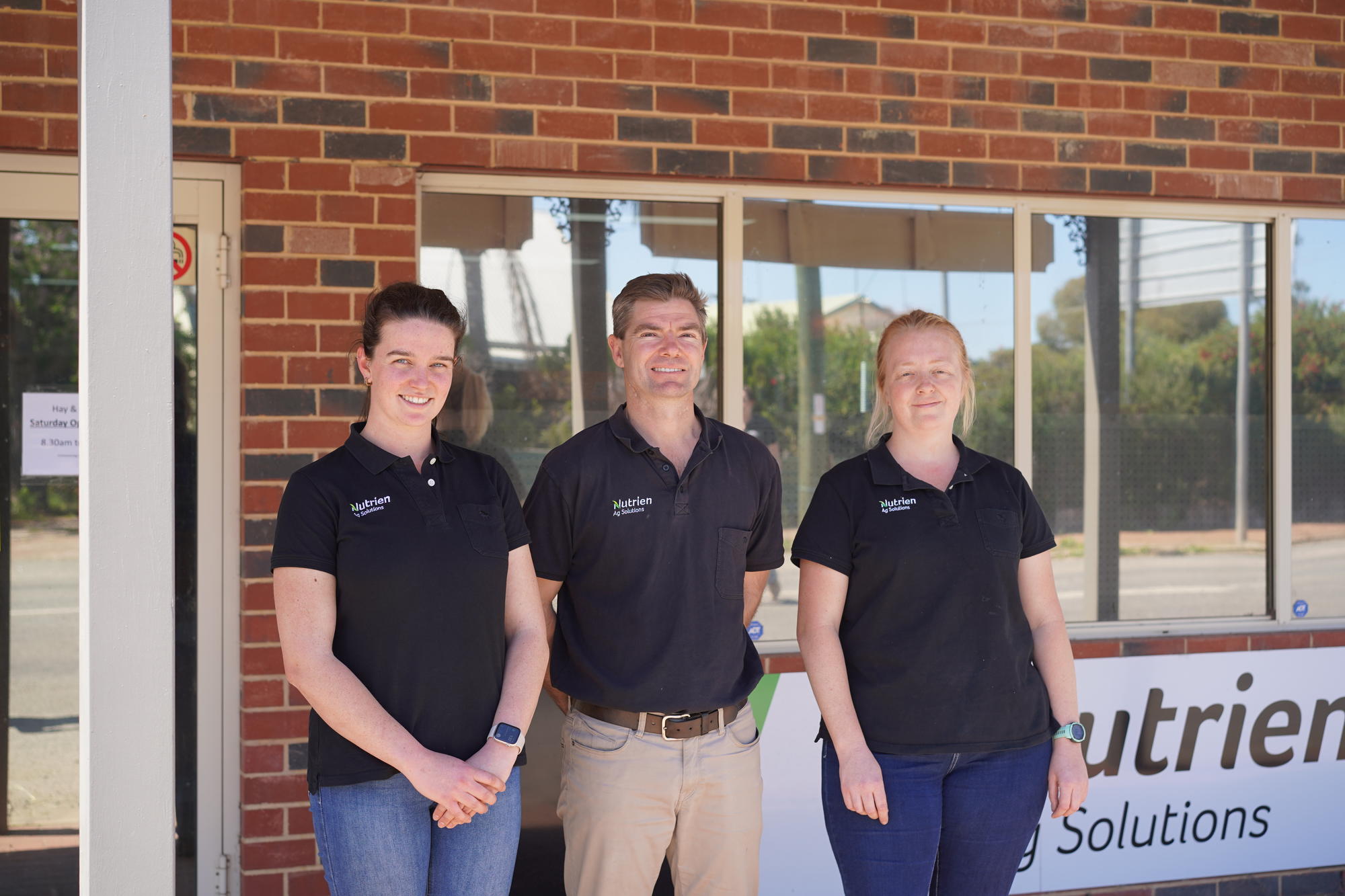World Soil Day: using science to optimise crop nutrition
Soil testing can measure soil water, nutrient and chemical parameters in the soil. Usually conducted pre-season, it’s become increasingly commonplace as part of a comprehensive data collection strategy which can include plant tissue tests, normalised difference vegetative index (NDVI) maps, yield data and more. Soil testing can also diagnose limitations such as salinity, acidity and poor structure caused by sodicity. From this data, high and low production zones in paddocks can be mapped out, forming the basis of a nutrition (fertiliser) strategy to improve soil fertility and increase yield potential.
In the Central Wheatbelt of Western Australia, Nutrien Agronomist Emma Cleaver is busy taking soil samples for growers around the York region, which are then sent to Perth for analysis.

“We use the soil lab in Perth to analyse plant and tissue tests throughout the year, and soil samples during summer to work out any nutrient deficiencies or issues going on within the plant, or in the soil. The exact soil tests depend on what the grower is looking for, but mainly we’re testing for nitrogen, potassium, phosphorus and sulphur,” says Emma.
“To take a soil sample, we use a tool called the universal soil probe, which is basically a drill that can go down to 30cm in depth. We usually take core samples at 10cm increments, then bag them up, log it through our app and send it off in the post to the lab. We usually take around 12 cores per sample, and the number of sites per paddock and farm will depend on a range of factors such as the paddock size, soil type and the grower’s preference. These sites have usually been predetermined through satellite imagery,” she explains.
At Nutrien’s laboratory in Perth, John Morritt leads a team of 13 who process these samples, providing valuable data for agronomists to help growers develop nutrition strategies, as well as forecasting insights for the Nutrien fertiliser teams.
“My background’s in environmental science and chemistry, so moving into agriculture was a new field for me. But the instruments and procedures are all the same – I like to say this place is like a kitchen, and if you follow the recipe, you’ll get a cake every time,” says John.
“Most of the tests we do are extractions, which provide an index of the portion of a nutrient (or nutrients) that will be available to a crop through the soil. We firstly dry the soil samples in ovens, then grind and weigh them ready for whatever test we’re conducting. In the prep lab, we’ll add extraction solution, before the sample goes into a tumbler for a predetermined time (from one to 16-plus hours) to thoroughly mix the extraction solution with the soil sample.”

“From here, the extraction solution is poured into test tubes and then put into a centrifuge to separate any of the remaining soil, leaving us with a nice clear sample. We’ll take this sample to the instrument room, where we’ll run ICP (inductively coupled plasma) scans to measure the metals and nutrient levels in the sample.”
The lab facility was opened in 2016 and since then, demand for soil and plant tissue tests have been increasing 20% year on year since then.
“January and February are the busiest time of year for us, when we’re running 16 hours a day,” says John.
Back at York, Emma Cleaver is working through the results of some recent soil tests.
“Once we get the results back – usually within a week, but sometimes a little longer depending on the time of season – we then analyse the report and make notes and commentary for the grower. Based on these results, we’ll develop a fertiliser and nutrition plan for the upcoming season, or year and then meet with the grower to go through everything together. It’s a big part of the circle of service that we offer,” says Emma.
“Testing provides data to make informed decisions. It can save you money and make you money.”